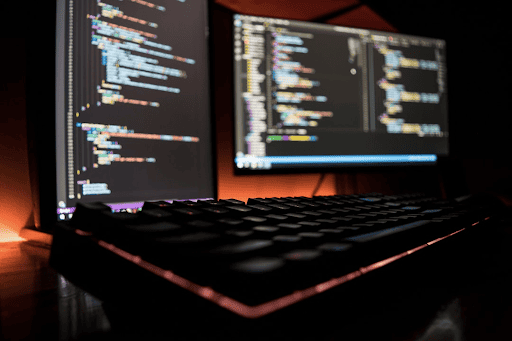Standing at the forefront of the generative AI revolution are Chief Information Officers (CIOs), all of whom are grappling with the implications of AI for their business. With its ability to synthesize information, generate creative ideas, and automate tasks, generative AI has the potential to redefine the very nature of IT leadership. Aim is already reshaping traditional workflows and fundamental changes to decision-making processes are sure to follow.
The rush to deploy these tools is understandable. But before we cede too much control to the algorithms, it’s essential to take a critical look at the potential and the practical applications within the IT leadership domain.
AI as a Tool for Efficiency and Insight
Imagine transforming the tedious task of report writing into a collaborative process with tools like Gemini or ChatGPT. No longer bogged down by data overload, AI models can analyze vast datasets, identify key trends, and translate those insights into clear narratives for decision-makers. This potentially frees up time and mental energy for strategic thinking.
AI can also become an invaluable thought partner in the cybersecurity battlefield. When faced with complex challenges, CIOs can leverage AI to explore potential threat vectors, predict where vulnerabilities might lie, and develop proactive countermeasures. Proactive simulations driven by AI models allow for stress-testing digital defenses without the risks of real-world attacks.
Let’s not forget the daily administrative burden many IT leaders face. An AI-powered personal assistant can streamline these tasks with remarkable efficiency. From scheduling meetings and drafting polished correspondence to prioritizing your inbox and curating relevant research – a well-trained model can orchestrate efficiency, allowing you to focus on higher-level IT strategy.
Cybersecurity: The AI Advantage
As cyber threats continue to evolve in sophistication and scale, generative AI offers a potent new tool for IT security teams. Consider the capabilities of:
Proactive AI Sentinels
AI models with the ability to analyze network traffic and vast data repositories can detect anomalies in real-time, alerting security teams to potential breaches before they escalate into crises. This enables early intervention, greatly minimizing potential damage.
Adaptive Digital Fortresses
Generative models can create hyper-realistic simulations of cyberattacks, allowing security teams to rigorously test defenses, identify vulnerabilities that traditional testing might miss, and proactively adapt security protocols.
Deception as Defense
AI can be used to generate realistic-looking honeypots, tricking attackers into revealing their techniques. This valuable intelligence allows cybersecurity teams to stay ahead of evolving threats.
Navigating the Labyrinth: Responsible AI
While incredibly powerful, generative AI remains a sophisticated analysis tool. The old adage “garbage in, garbage out” still rings true – the insights and outputs are only as good and reliable as the data driving it.
Take predictive maintenance as an example. While AI’s ability to analyze sensor data and anticipate potential failures is invaluable, these models can struggle with outlier events due to a lack of historical examples. CIOs must keep in mind the potential for ‘black swan’ events and ensure human judgment complements AI-driven insights to avoid a false sense of security.
Here are other key limitations and considerations to keep in mind:
The Specter of Bias
AI models are susceptible to inheriting any biases present in the data they’re trained on.Biased datasets can lead to discriminatory or harmful outputs, which CIOs must rigorously guard against using diverse and representative datasets, and by constantly scrutinizing AI results for signs of bias.
Explainable AI
Transparency is vital. CIOs should prioritize models that provide clear reasoning for their decisions. This promotes accountability and ensures trust by avoiding opaque “black box” systems where the decision-making process remains obscure.
Over-reliance and the Loss of Critical Thinking
Generative AI can streamline tasks and provide insights, but it shouldn’t become a crutch. CIOs need to strike a balance between leveraging AI’s power and maintaining their own critical thinking skills. It’s easy to fall into the trap of simply accepting AI-generated results, which can lead to blind spots or oversights.
Contextual Understanding (Or Lack Thereof)
Modern AI models excel at pattern recognition and data synthesis, but they often struggle with nuanced language, sarcasm, and cultural subtleties. This can lead to misinterpretations of information or the generation of inappropriate content. CIOs need to factor in these limitations when using AI for tasks that require deep contextual understanding.
Legal and Ethical Implications
Questions around intellectual property, liability, and unintended consequences become more complex in the realm of generative AI. For example, if an AI creates content that infringes copyright,or generates an actionable recommendation with negative consequences, who bears responsibility? CIOs must engage with legal and ethics experts to proactively navigate this challenging landscape.
Futurecasting: AI’s Transformative Potential
As generative AI evolves, we can envision a remarkable future. Here are just a few things to expect.
AI Infrastructure Orchestration
AI models could work seamlessly alongside human teams to manage IT infrastructure. These models would continuously optimize resource allocation, predict and prevent bottlenecks, and automate many routine maintenance tasks, delivering greater efficiency and resilience.
Real-time Situational Awareness
AI aggregates and visualizes vast amounts of data in real-time, which can present CIOs with a dynamic picture of system performance, potential issues, and resource utilization. This will empower data-driven decision-making and proactive interventions.
AI-Augmented Coding
Generative models can suggest solutions, optimize code, and even write basic program modules, significantly accelerating development cycles. This collaboration will enable human developers to focus on creative problem-solving while AI handles much of the routine coding.
TMG: Your Partner in Navigating AI
AI is a powerful tool, but it’s not a cybersecurity cure-all. That’s why the best protection comes from a partnership between cutting-edge AI and the experience of human specialists. At TMG, we’re committed to developing AI-powered solutions that work for you. Ready to explore how we can enhance your security posture? Let’s discuss how we can help you stay ahead of the curve.


0 Comments